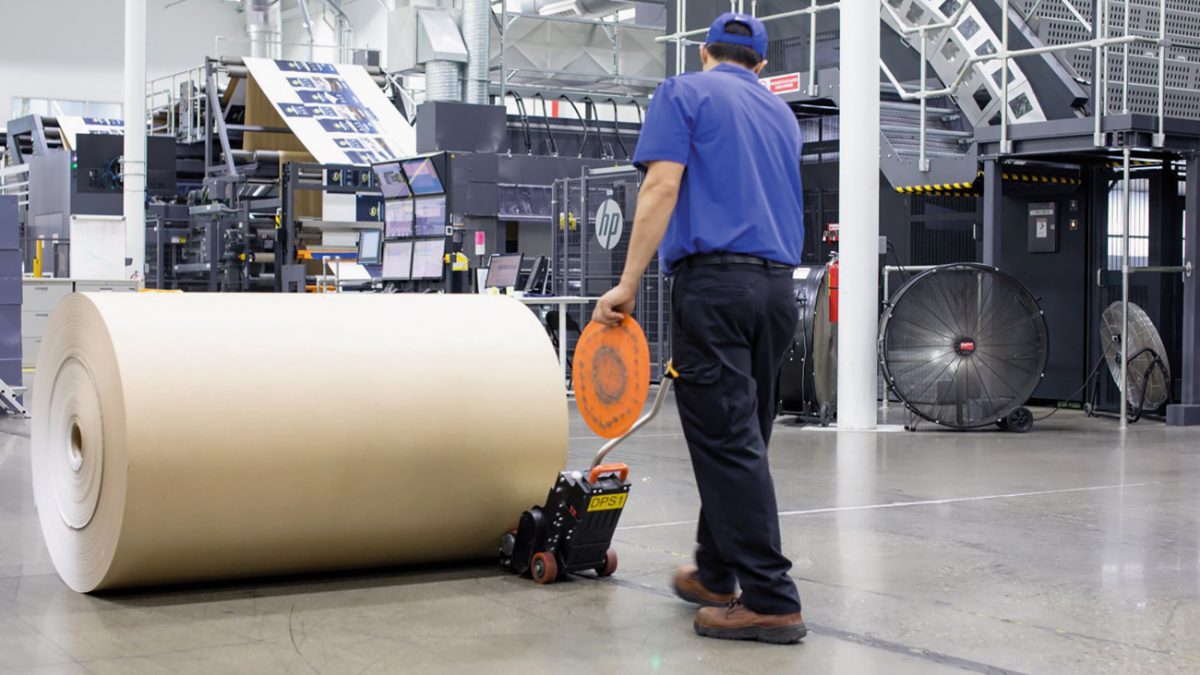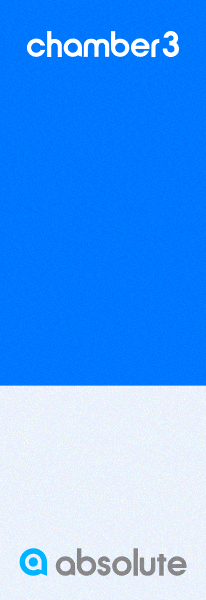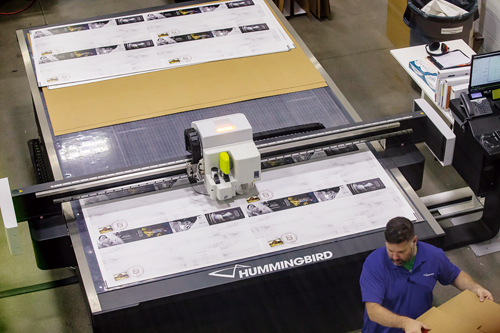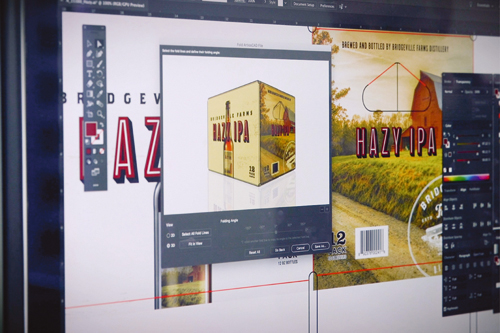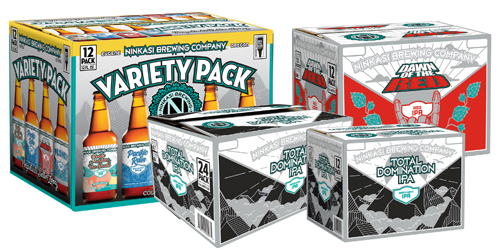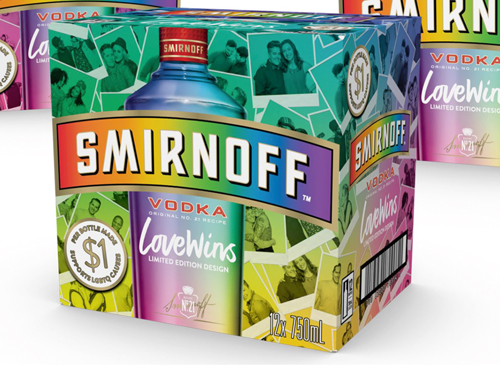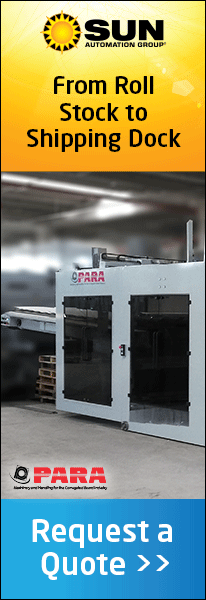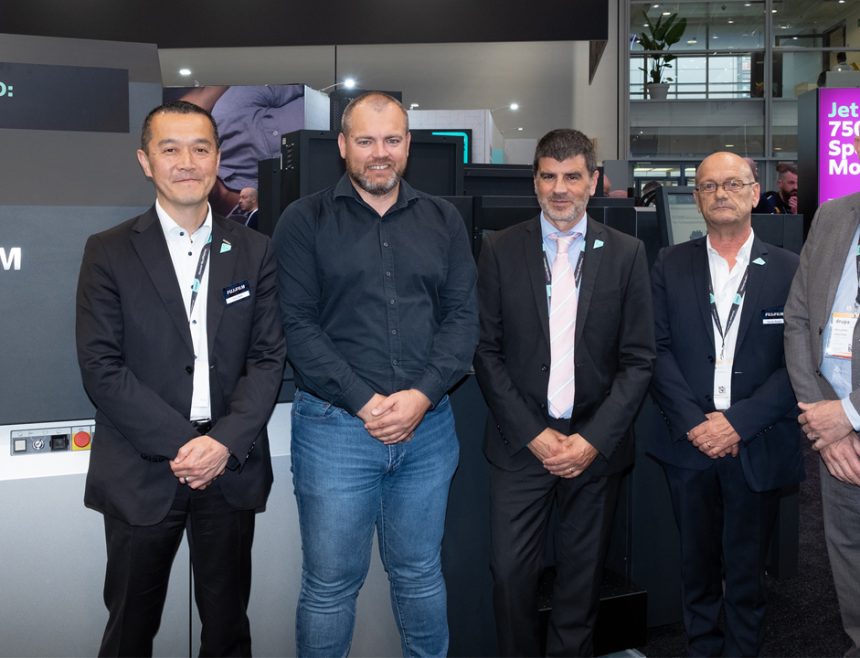Digital presses have revolutionised packaging, delivering high-impact colour and creating a new paradigm for versioning and customisation. Despite its innovations, digitally printed packaging has not always offered solutions across the full spectrum of sizes and quantities. Georgia-Pacific Hummingbird® digital packaging solutions overcame that barrier by producing digitally pre-printed rolls for a full range of customer needs, from specialty versions to everyday large runs.
“GP Hummingbird really incubated at Georgia-Pacific’s Color-Box, one of the largest corrugated litho providers in North America,” recalls Robert Seay, Vice President, Digital Print Solutions, Georgia-Pacific. “They did something innovative. They took the work into pre-print, which included laminators and flatbed die-cutters – and the corrugated market.”
Along came the HP PageWide T400, complementing the other equipment. The company already had laminators where rolls or sheets could be made into combined board and its box plants were converting offset pre-print from a roll press. Now it could take the rolls right off the T400, and already had the tools to make that work, immediately. “The wide web digital press let us attack high graphics print completely differently. Then, it morphed and became its own business,” Seay adds.
GP Hummingbird was proof of concept that digital could work as an offset alternative. When the HP T1100 was announced, Hummingbird was the first packaging supplier in North America to provide 110-inch wide web capability for digital pre-print at lengths. Recently, Georgia-Pacific announced the purchase of an HP PageWide T1190 Press, the world’s highest-volume digital corrugated packaging solution, providing an east-west footprint. It will assure redundancy, provide scale, and let GP Hummingbird improve turnaround time while reducing shipping and logistics costs.
“Much of our value proposition is supply chain efficiency. We can help different corrugated converters, turning around high volumes quickly. It’s easier to ship rolls of pre-print than boxes,” notes Seay. “Anybody can order our rolls, but we focus on those who know how to run pre-print. Onsite packaging engineers can help optimise layouts and packaging structures.”
Varied Customer Base
Serving many converters, GP Hummingbird has to consider how its workflow will be used everywhere. Customers will deliver a piece of artwork, perhaps from a flexo job, but will want to print digitally. The artwork could be a square or a rectangle, but finishing and the requirements of the box must also be determined.
Once a one-up is approved, a step-and-repeat layout must be prepared. The sheets must be imposed for the converter’s cutter. For example, a converter might generally use rotary die-cutters. A file built for a flatbed die-cutter needs an edge trim and a sidebar to grab before it goes on a rotary. You have to rethink the artwork at three levels – the one-up for the customer, the ‘n-up’ sheet for print and the corrugating and die-cutting tolerances. What does that layout look like and how do they get the customer to approve it? GP Hummingbird wanted an automated solution.
The entire process of creating the art and structure requires that they are approved together. “Sometimes we complete the artwork, but the structure changes because it’s going to a different corrugated converter – or a different piece wants the flap slightly different. That puts the artwork out of synch with the structure,” says Seay. At first, the process was manual and intensive, with many cross-checks to assure something didn’t change along the way, requiring adjustments.
GP Hummingbird’s business model is special. “Our original workflow couldn’t be customised, which became limiting, pretty quick,” discloses Seay. “Because we had HP digital presses, we’d already bought the SmartStream front end. We needed tools that could be adapted for our needs. We invested in HYBRID Software’s PACKZ and CLOUDFLOW and discovered a flexible workflow.”
The workflow is used to clean up files and ensure that processes are standardised. That becomes fairly important given all the work running through the shop. “The more touch points, the more potential for mistakes. The first thing we did was deploy our workflow, along with our HP and graphic management software,” Seay adds. “The challenge is to know what you want to do and manage the installation as a software project. It was helpful that we could customise everything at our centralised hub in Cincinnati.”
A Comprehensive Process
GP Hummingbird breaks the workflow down into three buckets: programming and integration, editing tools and then step and repeat, building a solution that offers everything to create a press ready PDF. The workflow is tied into the order processing system when product designs are created. They can refer to an existing design that will be changed, an existing structure, or anything in between.
Human intervention could result in a lack of consistency. “We have a structured process so we can trust what’s going through our system,” says Dave Fox, Hummingbird Graphics Manager. Hummingbird creates PDFs that are automatically processed, eliminating judgment calls when setting the job for the press. An example is automated marks: Where are the slit lines and cut marks for the corrugated converter? What should the die-cutter expect?
The workflow conducts all of the traditional pre-press tasks like preflighting and trapping – as well as a few that are more sophisticated. For example, GP Hummingbird can recognise a barcode and replace it, adjusting for any print method. The company will also distort files to take into consideration what’s going to happen on the press or with the corrugated converter. It also conducts colour mapping, adjusts transparencies and clipping paths, and more. By standardising and automating these functions in one application, it makes creation of a press ready PDF file much easier. “We get different files from many different places. They arrive with a variety of issues. There are many things we can fix automatically,” continues Fox.
The company prefers to call its proofing system a graphics portal – not a customer or vendor portal – because it’s about managing the entire graphics process. It can offer quick layout suggestions that way. For example, solid fills can cost more using digital ink. GP Hummingbird will offer cost-effective alternatives that are graphically better and can show examples of what they might look like. Customers view their proofs online.
If somebody wants to make a change, it’s not communicated via email. They can mark it up online and approve it, streamlining the entire process.
Step and repeat files and adjustments can be made without affecting the approved art. With the templates, imposing repeat items on existing layouts is faster and has increased consistency from layout to layout, because all marks are already placed, and approved.
Key to the process is being able to link the press upload server to the workflow, so files can be sent automatically to the press with a time stamp. There is one location to submit all project notes, reducing email traffic and offering a central place for team members to scan print sample info. Team members can track to see which jobs have been posted to press.
A Complete Workflow
During the COVID-19 pandemic, GP Hummingbird’s graphic designers were able to work from home and still be effective, working from the HYBRID server. “We really didn’t miss a beat. That’s a big deal,” exclaims Seay.
Delivering samples and proofs can delay a deadline, but some customers still want to visit and do crosschecks – although there have been fewer during COVID-19. Online proofing simplified the process and has made the workflow easy for many customers.
The software has eliminated a number of potential mistakes. That matters because customers want supply chain efficiency. “Our workflow conducts so many deep edits that our pre-production people can effectively normalise our production files in a third of the time, with fewer workarounds and issues due to file components. We cleared up a lot of initial graphics work making Hummingbird’s pre-press so streamlined that one person easily handles the work of two or three people using more traditional imposition tools,” says Seay.
“The corrugated converter or the supply chain constantly changes. We need to pivot on the fly. A lot of the complex decisions surround finishing. How much tolerance do you have on the die-cut or how is it laid out? For example, one high volume customer uses us for work that dynamically changes. When the art is ready, we need to print the jobs quickly, and to very specific specs,” he continues. “One job may require 70-inch rolls, while another might require 80 inches. If I didn’t have the workflow, it would be harder to manage.
“One of the key values of our workflow was flexibility. Digital is going to morph and evolve. We want to morph and evolve our software suite as well. We also want to offer a better experience for our customers. It really comes down to, ‘Can I control their artwork? Can I control the workflow in between? Can I give customers assurances that it’s going to get done in a structured manner?’ Because our workflow is incredibly flexible, adaptive and delivers high quality work, it is now extremely valuable for our business and our customers,” concludes Seay.

